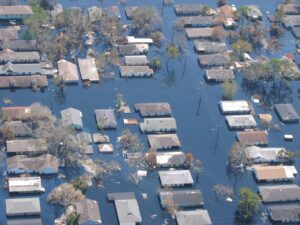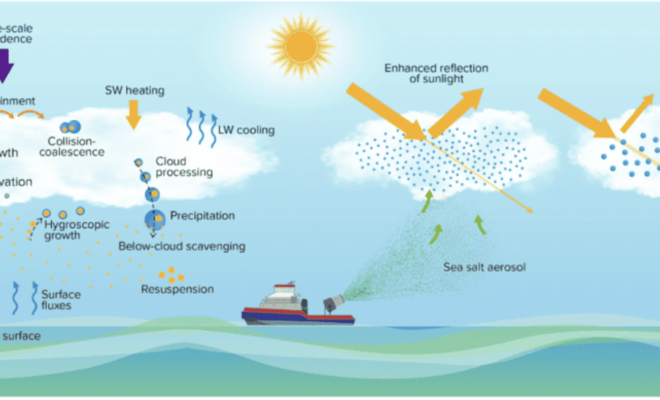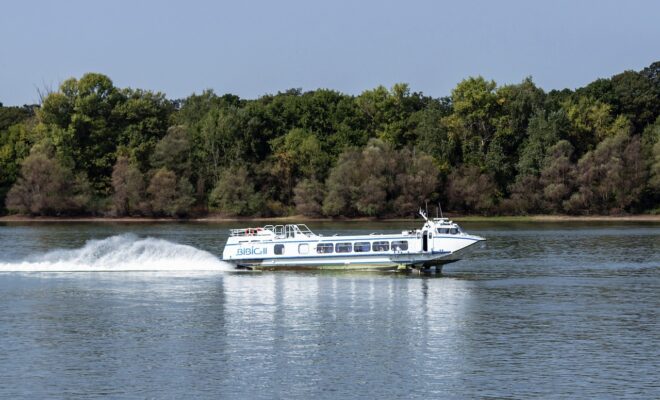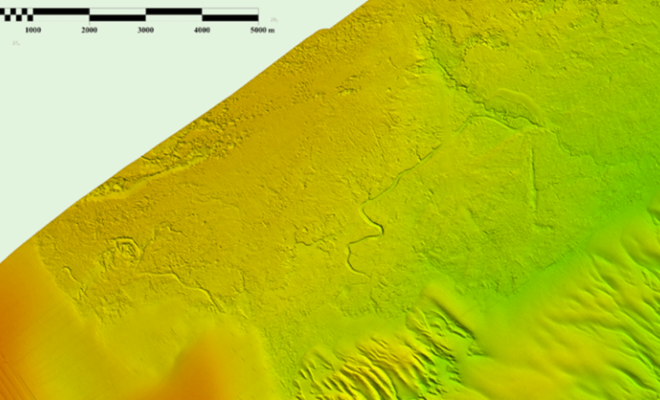From Irondequoit Bay west-northwest for 3.8 miles to the mouth of the Genesee River, deep water is about 0.5 mile offshore. A rock covered ½ foot is close inshore about 0.7 mile southeast of the Genesee River entrance.
Rochester Harbor, at the mouth of the Genesee River, is 54 miles west of Oswego Harbor and about 7 miles north of the main business district of the city of Rochester, NY. The river is navigable for about 5.5 miles above the mouth. The first of a group of dams is about 7 miles upstream from Lake Ontario. There is no navigable connection between the lower portion of the Genesee River and the New York State Canal, which connects with the river about 11 miles upstream from the lake. The surface elevation of the river falls more than 260 feet between the Rochester Terminal of the New York State Canal System and the head of navigation of the lower portion of the river below the dams. An unmarked dumping ground with a least reported depth of 35 feet is about 1.8 miles northeast of the mouth of the Genesee River.
Prominent features:
The stacks at the waste water treatment plant 1.9 miles southeast of the river mouth and the tall apartment building 1.1 miles southwest of the river mouth are the most prominent objects from offshore. Rochester Harbor Light (43°15’50″N., 77°35’56″W.), 40 feet above the water, is shown from a white cylindrical tower with red band on the outer end of the west pier.
Channels:
From Lake Ontario, the river is entered through a dredged channel that leads between two piers, thence upstream for 2.6 miles above the mouth. There are two turning basins, one just inside the mouth and the other 2 miles above the mouth on the west side of the channel; the upper turning basin is no longer maintained. The outer ends of the entrance piers are marked by lights; mooring is only allowed on the lakeside of the piers.
Dangers:
It is reported that northeast winds sometimes create waves as high as 6 feet that reflect through the entrance channel between the piers, making navigation into the harbor difficult. River currents sometimes compound this problem. A dangerous sunken wreck is 0.8 mile eastnortheast of Rochester Harbor Light.
Bridges:
The O’Rorke bridge, 1.25 miles above the pierheads, has a bascule span with a clearance of 41 feet (45 feet at center). Overhead power cables crossing the river 2.8 miles above the pierheads have a clearance of 141 feet. Above the limit of the federal project, a pipeline bridge, about 5.1 miles above the pierheads, has a fixed span with a clearance of 86 feet. The Ridge Road (U.S. Route 104) bridge, about 5.5 miles above the pierheads, has a fixed span with a clearance of 160 feet. The Driving Park Avenue bridge, 6.4 miles above the pierheads, has a fixed span with unknown clearance.
Quarantine, customs, immigration and agricultural quarantine:
Quarantine is enforced in accordance with the regulations of the U.S. Public Health Service.Rochester is a customs port of entry. Rochester has several hospitals.
Coast Guard Station:
Rochester Coast Guard Station is on the east side of the river just inside the mouth. A speed limit of 6 mph is enforced in Rochester Harbor.
Wharves:
Essroc Cement Corp. Charlotte Dock (43°13’50″N., 77°37’00″W: 488 feet of berthing space with 21 feet alongside and a deck height of 8 feet; three pipelines extend from wharf to eight concrete storage silos with a capacity of 23,925 tons; receipt of cement; owned and operated by Essroc Cement Corp.
Supplies:
Some marine supplies, water, provisions and diesel fuel can be obtained at Rochester.
Small-craft facilities:
Marinas at Rochester provide transient berths, gasoline, diesel fuel, water, ice, electricity, sewage pumpout, marine supplies, launching ramps, mobile lifts to 40 tons and hull, engine and electronic repairs. In 1977, depths of 2 to 12 feet were reported alongside the berths.
Information from Coast Pilot: https://nauticalcharts.noaa.gov/publications/coast-pilot/files/cp6/CPB6_WEB.pdf. Chart reference: 14815




